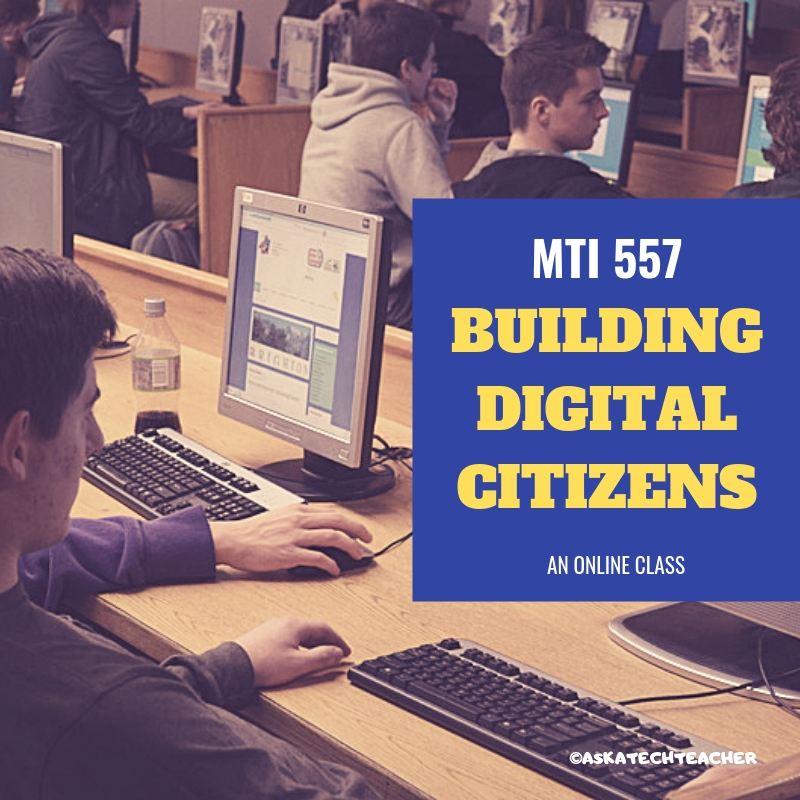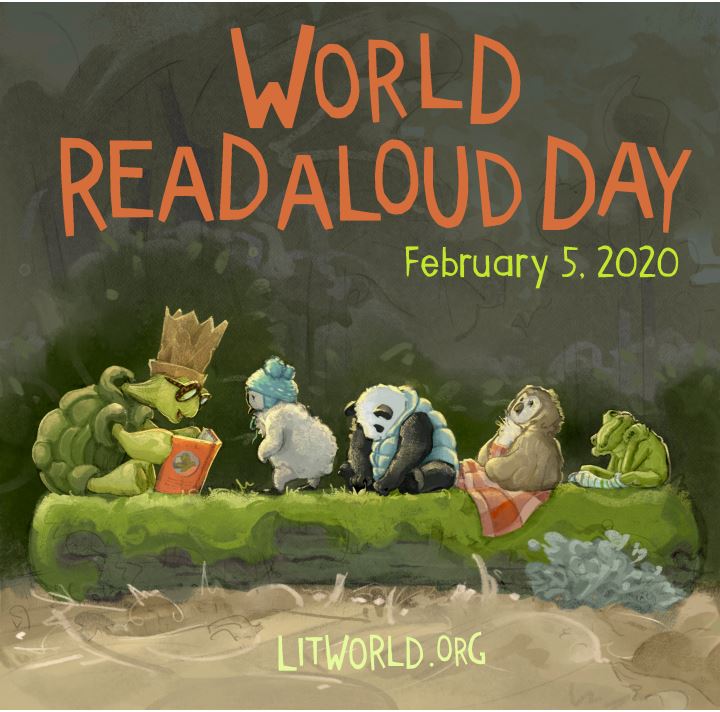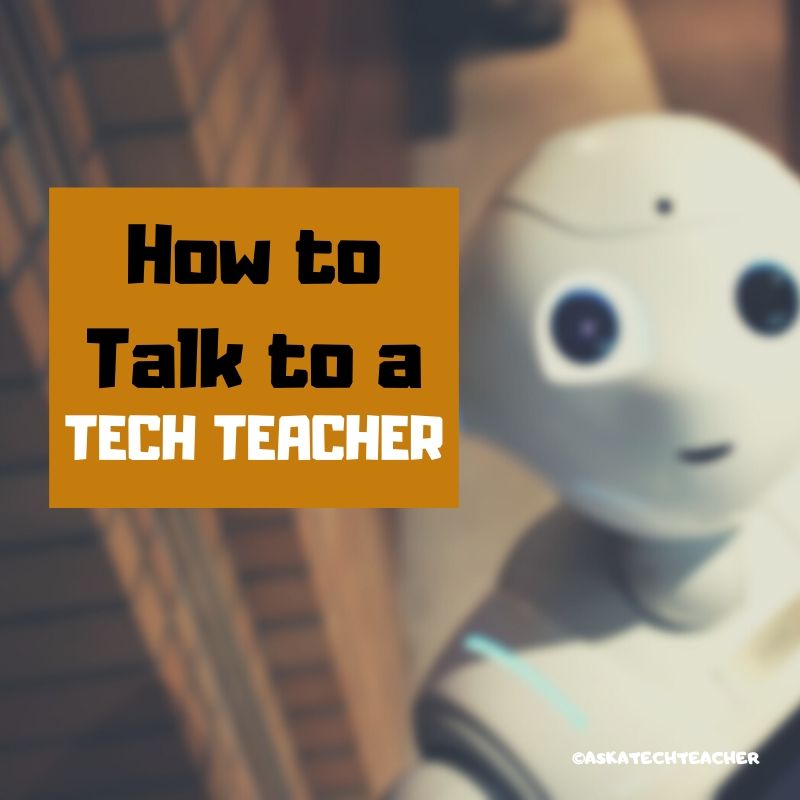Author: Jacqui
169 Tech Tip #36: The Internet Toolbar Disappeared
 In these 169 tech-centric situations, you get an overview of pedagogy—the tech topics most important to your teaching—as well as practical strategies to address most classroom tech situations, how to scaffold these to learning, and where they provide the subtext to daily tech-infused education.
In these 169 tech-centric situations, you get an overview of pedagogy—the tech topics most important to your teaching—as well as practical strategies to address most classroom tech situations, how to scaffold these to learning, and where they provide the subtext to daily tech-infused education.
Today’s tip: The Internet Toolbar Disappeared
Category: Internet
Sub-category: Problem-solving
Q: My internet toolbar disappeared. All I see at the top of the internet screen is more of the page I’m on. I can’t find any of the tools. What do I do?
A: Push F11. You can hide or unhide the internet toolbar with F11. This is great if you’re working closely with the site and don’t want the distraction of toolbars.
Sign up for a new tip each week or buy the entire 169 Real-world Ways to Put Tech into Your Classroom.
Share this:
Last Chance for this College-credit Class (MTI 557)
MTI 557: Building Digital Citizens
starts Monday, June 29, 2020
vv
xx
If students use the internet, they must be familiar with the rights and responsibilities required to be good digital citizens. In this class, you’ll learn what topics to introduce, how to unpack them, and how to make them authentic to student lives.
Topics include:
- copyrights, fair use, public domain
- cyberbullying
- digital commerce
- digital communications
- digital footprint, digital privacy
- digital rights and responsibilities
- digital search/research
- image—how to use them legally
- internet safety
- netiquette
- passwords
- plagiarism
- social media
At the completion of this course, you will be able to:
- Know how to blend digital citizenship into lesson plans that require the Internet
- Be comfortable in your knowledge of all facets of digital citizenship
- Become an advocate of safe, legal, and responsible use of online resources
- Exhibit a positive attitude toward technology that supports learning
- Exhibit leadership in teaching and living as a digital citizen
Assessment is based on involvement, interaction with classmates, and completion of projects so be prepared to be fully-involved and an eager risk-taker. Price includes course registration, college credit, and all necessary materials.
To enroll, click the link above, search for MTI 557 and sign up. Need help? Email [email protected] for upcoming dates.
Share this:
Great Virtual Reality Apps
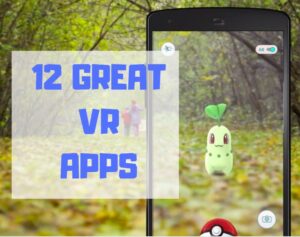 The potential impact of Virtual Reality (VR) in the classroom can’t be overstated. It has become the most exciting education device in a decade, enticing students to become engaged in pretty much any topic that includes a VR overlay. As a learning tool, it’s affordable, inclusive, and worth the moderate learning curve required to get it up and running.
The potential impact of Virtual Reality (VR) in the classroom can’t be overstated. It has become the most exciting education device in a decade, enticing students to become engaged in pretty much any topic that includes a VR overlay. As a learning tool, it’s affordable, inclusive, and worth the moderate learning curve required to get it up and running.
Let me step back a moment and explain what VR is. HowStuffWorks defines it this way:
using computer technology to create a simulated, three-dimensional world that a user can manipulate and explore while feeling as if he were in that world.
Marxent explains it simply as:
the use of computer technology to create a simulated environment. Virtual Reality’s most immediately-recognizable component is the head-mounted display (HMD).
If you (desperately) want to unpack this revolutionary tool in your classroom, there are lots of online resources — some free, some with a fee — available to address a wide variety of education needs. Here are my favorites:
900 VR Expeditions
If you use the Expeditions app (see below), here’s a curated spreadsheet of 900 free expeditions available to you and your classes. It is crowd-sourced and sorted by tag, name, Panorama title, location, brief description, link, with a cell where teachers can note any additional required materials.
On a separate tab of the spreadsheet is a similar curated list of augmented reality expeditions, for those who have that technology available.
Share this:
169 Tech Tip #70 Visit Foreign Language Google Search
 In these 169 tech-centric situations, you get an overview of pedagogy—the tech topics most important to your teaching—as well as practical strategies to address most classroom tech situations, how to scaffold these to learning, and where they provide the subtext to daily tech-infused education.
In these 169 tech-centric situations, you get an overview of pedagogy—the tech topics most important to your teaching—as well as practical strategies to address most classroom tech situations, how to scaffold these to learning, and where they provide the subtext to daily tech-infused education.
Today’s tip: Visit Foreign Language Google Search
Category: Internet
Sub-category: Language, Search/Research
Q: English isn’t my first language. How do I access Google in other languages?
A: To visit the foreign language Google search engines, type:
Then add the country extension you would like to visit. For example:
…for Japan.
Sign up for a new tip each week or buy the entire 169 Real-world Ways to Put Tech into Your Classroom.
Share this:
169 Tech Tip #79 My Internet Stopped Working
 In these 169 tech-centric situations, you get an overview of pedagogy—the tech topics most important to your teaching—as well as practical strategies to address most classroom tech situations, how to scaffold these to learning, and where they provide the subtext to daily tech-infused education.
In these 169 tech-centric situations, you get an overview of pedagogy—the tech topics most important to your teaching—as well as practical strategies to address most classroom tech situations, how to scaffold these to learning, and where they provide the subtext to daily tech-infused education.
Today’s tip: My Internet Won’t Work
Category: Internet
Sub-category: Problem-solving
Q: My internet stopped for no reason. I’m in the middle of something important. I don’t want to reboot—it takes forever. What can I do?
A: Do what the pros do–unplug your internet connection, wait ten seconds, and plug it in again. Half the time, this is all it takes.
The same applies to a printer that stops for no known reason–turn it off, wait ten seconds and turn it back on. It’s something about tasks being shuffled out of the way and needing to re-establish their order. All I know is it works often enough, it’s my first line of defense to problem-solving this particular problem.
If that doesn’t work, try these:
- use a different browser
- reboot your computer
- check all the cables–is everything plugged in as it should be?
- see if your firewall is blocking it
- check recent system upgrades–did they affect the internet?
- ask a neighbor if theirs is working–maybe it’s out all over
Sign up for a new tip each week or buy the entire 169 Real-world Ways to Put Tech into Your Classroom.
Share this:
What is Constructivism and How Does it Fit Your Class?
 Constructivism is a student-centered philosophy that emphasizes hands-on learning and active participation in lessons. Constructivists believe that learning is an active process so the most effective way to learn is through discovery. With hands-on activities, learners actively create their own subjective representation of objective reality. Because new information is blended into prior knowledge, the result is – of course – subjective, heavily dependent upon the personal lens of each learner. That, in turn, is dependent upon their society, culture, past knowledge, personal experiences, and more.
Constructivism is a student-centered philosophy that emphasizes hands-on learning and active participation in lessons. Constructivists believe that learning is an active process so the most effective way to learn is through discovery. With hands-on activities, learners actively create their own subjective representation of objective reality. Because new information is blended into prior knowledge, the result is – of course – subjective, heavily dependent upon the personal lens of each learner. That, in turn, is dependent upon their society, culture, past knowledge, personal experiences, and more.
Learning is constructed, not acquired, and is based on the fullness of a person’s individual lifetime of learning. It is continuously tested as new ideas are added, either causing long-held beliefs to evolve or be replaced.
Constructivism is not a pedagogy or a theory. It is a mindset — a way of thinking used to guide learners.
Share this:
Random Acts of Kindness Day is Coming. How Will You Celebrate?
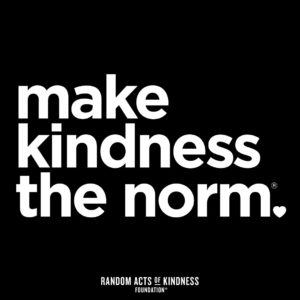 I’ll never forget the day years ago when I stood in a donut shop, half asleep, bed head, with a monster sugar deficit. As I got to the front of the line, the man before me said, “I’ll pay for hers, too.” I didn’t know him. We hadn’t commiserated over how Krispy Kreme was always crowded. I’d just slogged onward, waiting my turn, eager to taste my apple fritter. His simple act of paying for my donut made me feel special, brought a smile to my face all day, and lightened the load of whatever happened after that.
I’ll never forget the day years ago when I stood in a donut shop, half asleep, bed head, with a monster sugar deficit. As I got to the front of the line, the man before me said, “I’ll pay for hers, too.” I didn’t know him. We hadn’t commiserated over how Krispy Kreme was always crowded. I’d just slogged onward, waiting my turn, eager to taste my apple fritter. His simple act of paying for my donut made me feel special, brought a smile to my face all day, and lightened the load of whatever happened after that.
That was one of my first Random Acts of Kindness, the feel-good event started in 1995. Now, February 17th in America is called the Random Acts of Kindness Day (September 1st in New Zealand) and is when everyone encourages acts of kindness without any expectation of consideration in return.
“Kindness is a language which the deaf can hear and the blind can see.” — Mark Twain
What is Random Acts of Kindness Day?
February 17th — Random Acts of Kindness (RAK) Day — is twenty-four hours when anyone who chooses to participate agrees to perform unexpected acts of kindness to pay it forward for that time they need a little bit of unexpected care. We flaunt our altruistic side by doing something nice for another without a thought for the consequences.
Why is Kindness important?
Why kindness is important seems obvious but really, it isn’t. I can name a whole lot of people who have succeeded despite being, well, jerks so why should we think there’s merit in a gentler approach?
Share this:
#WorldReadAloudDay February 5
 On Feb. 5, 2020, World Read Aloud Day celebrates the pure joy of oral reading with kids of all ages. Created by LitWorld, past years have found over 1 million people in 100 countries joining together to enjoy the power and wonder of reading aloud in groups or individually, at school or home, and discovering what it means to listen to a story told through the voice of another. For many, this is a rare opportunity to hear the passion of a well-told story and fall in love with tales where hearing them reaches listeners on a level nothing else can. Think back to your experiences. You probably sat with an adult, in their lap or curled up in bed. The way they mimicked the voices in the story, built drama, and enthused with you over the story and characters made you want to read more stories like that on your own. This is a favorite activity not just for pre-readers, but beginning and accomplished readers because it’s not about reading the book; it’s about experiencing it through the eyes of a storyteller.
On Feb. 5, 2020, World Read Aloud Day celebrates the pure joy of oral reading with kids of all ages. Created by LitWorld, past years have found over 1 million people in 100 countries joining together to enjoy the power and wonder of reading aloud in groups or individually, at school or home, and discovering what it means to listen to a story told through the voice of another. For many, this is a rare opportunity to hear the passion of a well-told story and fall in love with tales where hearing them reaches listeners on a level nothing else can. Think back to your experiences. You probably sat with an adult, in their lap or curled up in bed. The way they mimicked the voices in the story, built drama, and enthused with you over the story and characters made you want to read more stories like that on your own. This is a favorite activity not just for pre-readers, but beginning and accomplished readers because it’s not about reading the book; it’s about experiencing it through the eyes of a storyteller.
Somehow, as lives for both the adults and children have gotten busier, as digital devices have taken over, as parents turned to TVs or iPads to babysit kids while they do something else, we’ve gotten away from this most companionable of activities. World Read Aloud Day is an opportunity to get back to it.
Importance of reading aloud
There is no more powerful way to develop a love of reading than being read to. Hearing pronunciations, decoding words in context, experiencing the development and completion of a well-plotted story as though you were there are reason enough to read aloud but there’s more. Reading in general and reading aloud specifically is positively correlated to literacy and success in school. It builds foundational learning skills, introduces and reinforces vocabulary, and provides a joyful activity that’s mostly free, cooperative, and often collaborative. Did you know reading aloud:
Share this:
100th Day of School — Make it about Learning
 Before becoming a teacher, I didn’t understand why the 100th day of school was a big deal. At first, I thought it had to do with finding something exciting about the dreariness of post-Christmas January but when I counted school days from Labor Day to the hundred-day mark (skipping weekends, two weeks at Christmas and a week at Thanksgiving), that put me in the second week of February. Some colleagues say the 100th Day is a rich teachable moment that revolves around math. One efriend told me it occurs about the time when most kindergarten curricula cover how to count to 100. Others tell me it’s simply a milestone, important to young children and passe to olders.
Before becoming a teacher, I didn’t understand why the 100th day of school was a big deal. At first, I thought it had to do with finding something exciting about the dreariness of post-Christmas January but when I counted school days from Labor Day to the hundred-day mark (skipping weekends, two weeks at Christmas and a week at Thanksgiving), that put me in the second week of February. Some colleagues say the 100th Day is a rich teachable moment that revolves around math. One efriend told me it occurs about the time when most kindergarten curricula cover how to count to 100. Others tell me it’s simply a milestone, important to young children and passe to olders.
How to celebrate
Turns out, the reason doesn’t really matter because celebrating isn’t a problem with kids. They love parties. So I decided to accommodate the 100th Day fever by wrapping it in learning. Here are thirteen activities I like that blend learning into a celebration of the 100th Day of School:
Geography
As a class, come up with two locations in each state, to total 100. One will be oriented around geography and one around history (such as “Kansas became a state January 29, 1861”). Include a brief description and a picture and then share the collection with parents and schoolmates in the class newsletter or another vehicle.
History
Research what happened the hundredth year of your home country’s existence. What was the country like a hundred years ago? What caused it to change? Who was president? What has been invented since then? Divide the class into groups so the project can be completed in one class period. Then, have everyone copy their information to a digital magazine (like you can create in Canva or Adobe) and share it with everyone.
Share this:
How to Talk to a Tech Teacher
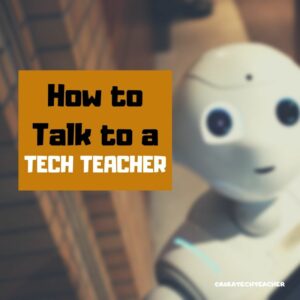 There’s always been something mystical about people in technical professions–engineering, science, mathematics. They talk animatedly about plate tectonics, debate the structure of mathematical functions, even smile at the mention of calculus. The teaching profession has their own version of these individuals, called ‘technology teachers’. They used to be stuffed in a corner of the school where most teachers could pretend they didn’t exist, that what they did was for ‘some other educator in an alternate dimension’.
There’s always been something mystical about people in technical professions–engineering, science, mathematics. They talk animatedly about plate tectonics, debate the structure of mathematical functions, even smile at the mention of calculus. The teaching profession has their own version of these individuals, called ‘technology teachers’. They used to be stuffed in a corner of the school where most teachers could pretend they didn’t exist, that what they did was for ‘some other educator in an alternate dimension’.
That all changed when technology swept across the academic landscape like a firestorm:
- iPads became the device of choice in the classroom
- Class screens became more norm than abnorm(al)
- Technology in the classroom changed from ‘nice to have’ to ‘must have’
- 1:1 became a realistic goal
- Students researched online as often as in the library
- Students began spending as much time in a digital neighborhood as their home town
- Textbooks morphed into resources rather than bibles
Today, teachers who don’t use technology are an endangered species. Often, they’re too young to retire, so they get a digital map from a colleague to that place where they’ve been told they’ll find help–from a person variously called the ‘tech teacher’, ‘integration specialist’, or ‘tech coordinator’.
As they enter the room, they figure the person they’re looking for must be the one who looks up as they enter, fingers flying across the keyboard, never pausing and never slowing even as she smiles and says, ‘Hi!’.
Before you ask your question, I have a short list of signs that will help you have a more positive experience when you confront this big-brained Sheldon-look-like:
- You can’t scare them (in fact, even Admin and politics don’t frighten them). They’re techies. Try kindness instead.
- Patience and tech are oxymorons. Know that going in.
- Bring food. Techies often forget to eat, or ate everything in their snack stash and need more.
- Some days, tech looks a lot like work. Distract them with an interesting problem.
- Start the encounter with a discussion on Dr. Who, Minecraft, or Big Bang Theory. Find a clever tie-in to your topic.
- Understand that tech teachers often think trying to teach teachers to tech is like solving the Riemann Hypothesis (many consider it impossible). Bone up on basics before the Meeting.
- Life after the 100th crashed computer is what Oprah might call a life-defining moment. If that just happened as you walked through the door, turn around and come back another time.
- Understanding a techie who’s in the zone is like understanding the meaning of life. Again–leave the room; come back later.


